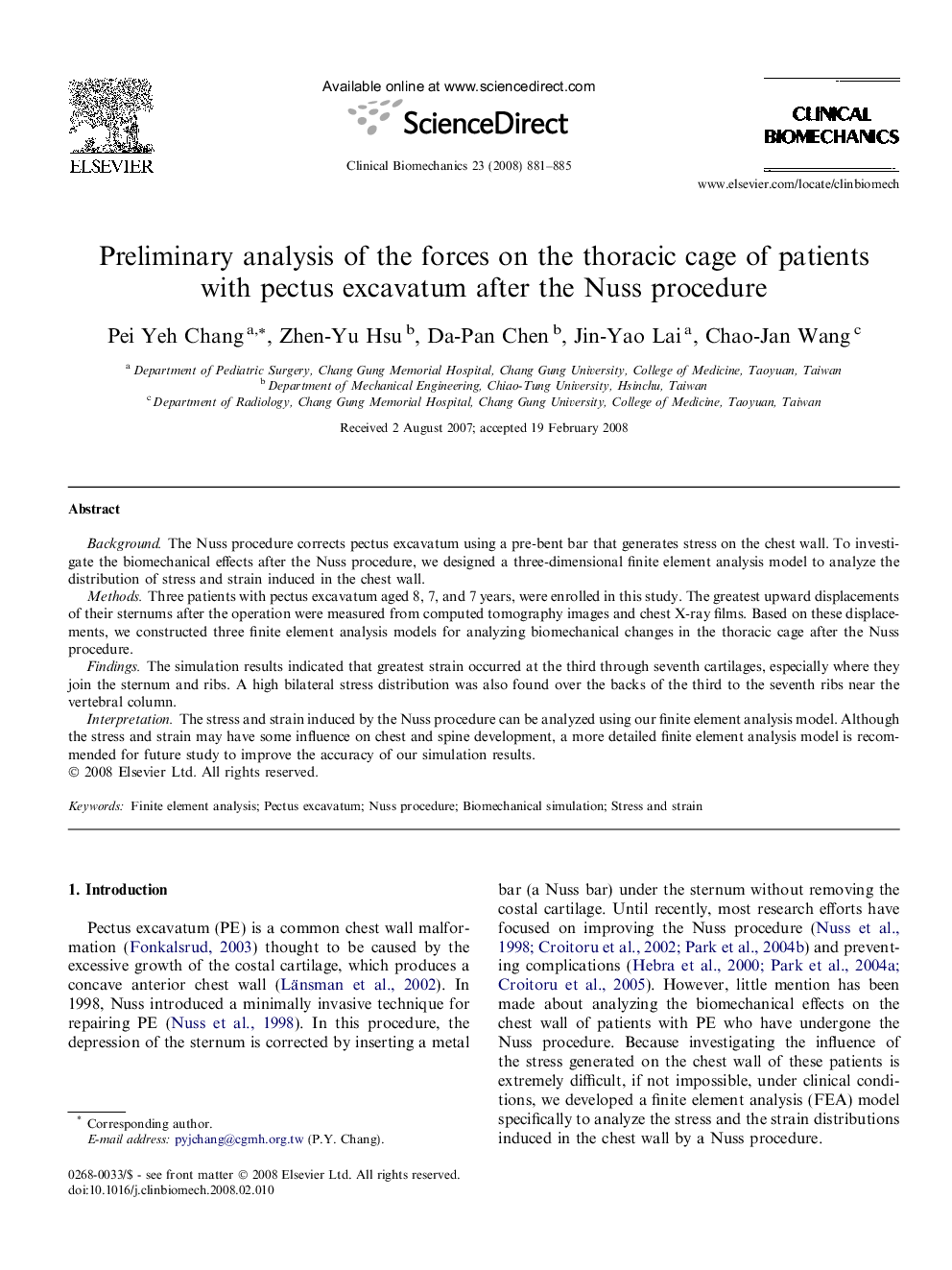| Article ID | Journal | Published Year | Pages | File Type |
|---|---|---|---|---|
| 4051384 | Clinical Biomechanics | 2008 | 5 Pages |
BackgroundThe Nuss procedure corrects pectus excavatum using a pre-bent bar that generates stress on the chest wall. To investigate the biomechanical effects after the Nuss procedure, we designed a three-dimensional finite element analysis model to analyze the distribution of stress and strain induced in the chest wall.MethodsThree patients with pectus excavatum aged 8, 7, and 7 years, were enrolled in this study. The greatest upward displacements of their sternums after the operation were measured from computed tomography images and chest X-ray films. Based on these displacements, we constructed three finite element analysis models for analyzing biomechanical changes in the thoracic cage after the Nuss procedure.FindingsThe simulation results indicated that greatest strain occurred at the third through seventh cartilages, especially where they join the sternum and ribs. A high bilateral stress distribution was also found over the backs of the third to the seventh ribs near the vertebral column.InterpretationThe stress and strain induced by the Nuss procedure can be analyzed using our finite element analysis model. Although the stress and strain may have some influence on chest and spine development, a more detailed finite element analysis model is recommended for future study to improve the accuracy of our simulation results.
